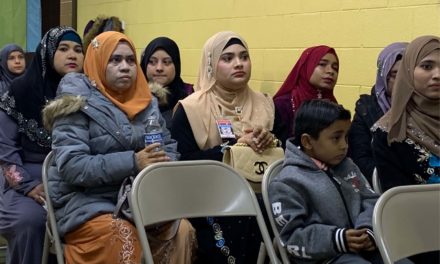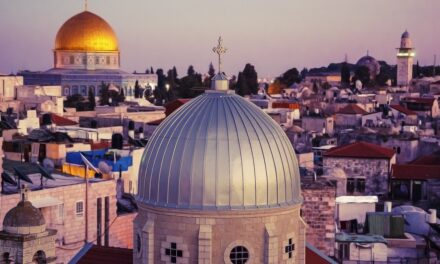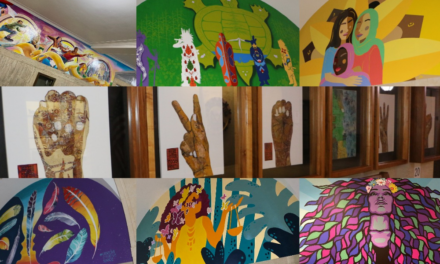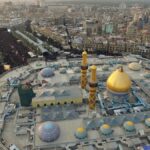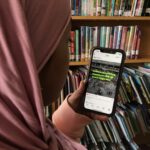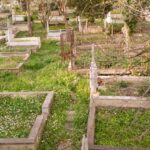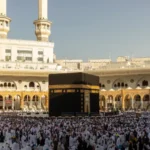Photo credit
Nir Elias/Reuter
Israeli forces and settlers are targeting Palestinian protesters – and the medics trying to rescue them.
Niilin, occupied West Bank – Bassem Sadaqa points at a bullet hole lodged in the driver’s door of the ambulance he drives, tangible evidence of what he says is a regular occurrence of Palestinian medics being “regularly targeted” by Israeli forces.
The father of five lives in Niilin and has been a paramedic with the Palestine Red Crescent Society (PRCS) for 20 years.
“At first I thought the ambulance had been hit by stones until I saw the hole. The shooting wasn’t an accident, the Israeli soldiers were aiming at the ambulance as I was standing right near it. And it also wasn’t the first time ambulances I have driven have been targeted.”
Sadaqa had been on the front lines with his fellow Palestinian medics on the day this happened, fighting to save lives and rushing wounded protesters to hospitals a half-hour’s drive away.
Palestinian villagers protesting against the illegal establishment of yet another Israeli outpost on their village land had been confronted by Israeli settlers, resulting in violence and many injuries.
Niilin is an agricultural village of more than 6,000 people who mostly make their living from farming that lies 17km (10 miles) west of the main occupied West Bank city of Ramallah.
The people there are fighting to keep what land the village has left from being expropriated by ever-encroaching illegal Israeli settlements and outposts – they are now surrounded by the illegal Israeli settlements of Nili and Na’ale in the northeast and Modi’in Illit to the south.
Under the 1993 Oslo Accords between the Israeli government and the Palestine Liberation Organization, 93 percent of the village’s 15,000 dunams (1,500 hectares) was designated as Area C – comprising 60 percent of the West Bank – and falls under full Israeli control.
Israel restricts Palestinian construction in most of Area C and reserves the area for the expansion of settlements, illegal under international law.
‘Increase in the use of live ammunition’
On a recent Friday, the main day of protests in the West Bank, Al Jazeera accompanied an ambulance driven by paramedics Ziad Abu Latifa, 50, from Qalandiya refugee camp and Said Suleiman, 40, from the village of al-Midya near Niilin.
A settler from a nearby outpost had moved his cattle to graze on Palestinian land, leading to two days of protests as groups of settlers invaded the village, set fire to fields, and damaged Palestinian vehicles and hundreds of Palestinians gathered to try to repel them.
One of those wounded was Niilin Mayor Emad Khawaja, who was shot in the leg by Israeli troops.
“Eleven people were wounded by live bullets on the first day and four on the second day of clashes. We have noticed an increase in the use of live ammunition against protesters recently,” Khawaja told Al Jazeera.
“The bullet will remain in my leg for life because trying to remove it would cause more damage than it remaining there.”
As the number of injuries rose, this particular ambulance hurtled at breakneck speed along the winding, narrow roads up hills and down valleys, making two trips from Niilin to Ramallah Hospital and back.Abu Latifa, a paramedic for five years, volunteer with the PRCS for 17 years, and father of eight, told Al Jazeera that although his job was dangerous and stressful, he felt he was helping the best way he could after witnessing first-hand the wounds inflicted on Palestinians through the years and the lack of quality medical treatment afforded to them.
“While taking part in protests in the first Intifada I had bones broken and was dumped at the side of the road by Israeli soldiers before a passing motorist took me to hospital where I was unconscious for two days,” said Abu Latifa.
During the first Palestinian Intifada from 1987 to 1993, the late Israeli Prime Minister Yitzhak Rabin ordered Israeli soldiers to break the arms and legs of Palestinians as a way of stopping them from throwing stones as protests swept across the occupied West Bank and Gaza – a move that provoked international outrage.
“This was sufficient motivation for me to go and study to be a paramedic in order to be able to give people first aid and transport them to hospital,” said Abu Latifa.
‘Soldier hit me in the head with the butt of his rifle’
Sadaqa said during his time in the field he tries to stay calm, ignore the stress, and focus on treating his patients as well as he can in the circumstances.
“One of the other problems we face is the soldiers refusing to allow the ambulances to approach those seriously wounded or stopping ambulances that are trying to evacuate the injured to hospital, and sometimes removing our patients from the ambulance,” he said.
He is not alone in that experience.
One of Abu Latifa’s worst experiences was attempting to reach a Palestinian protester in the village of Nabi Saleh, near Ramallah, who had been shot with the bullet going through his side and exiting his neck.
The young man had been wounded from a distance as Israeli soldiers cracked down on protesters on village land, but the troops prevented the paramedics from approaching the critically wounded youth who subsequently died.
“It’s especially difficult travelling at night to fetch patients when nobody is around and no journalists are on the ground to witness what is happening,” said Abu Latifa.
“I recently travelled to Kubar village, near Ramallah, to evacuate a young man who had been shot in the leg by soldiers. But as I tried to put him in an ambulance a soldier hit me in the head with the butt of his M-16 [assault rifle].
“I then phoned dispatch and after an hour of negotiations with the Israeli liaison office we were allowed to evacuate the patient.”
As the sun set and Abu Latifa and Suleiman’s shift ended, the ambulance returned to Ramallah with the exhausted paramedics, satisfied they had done the best they could to save lives.

